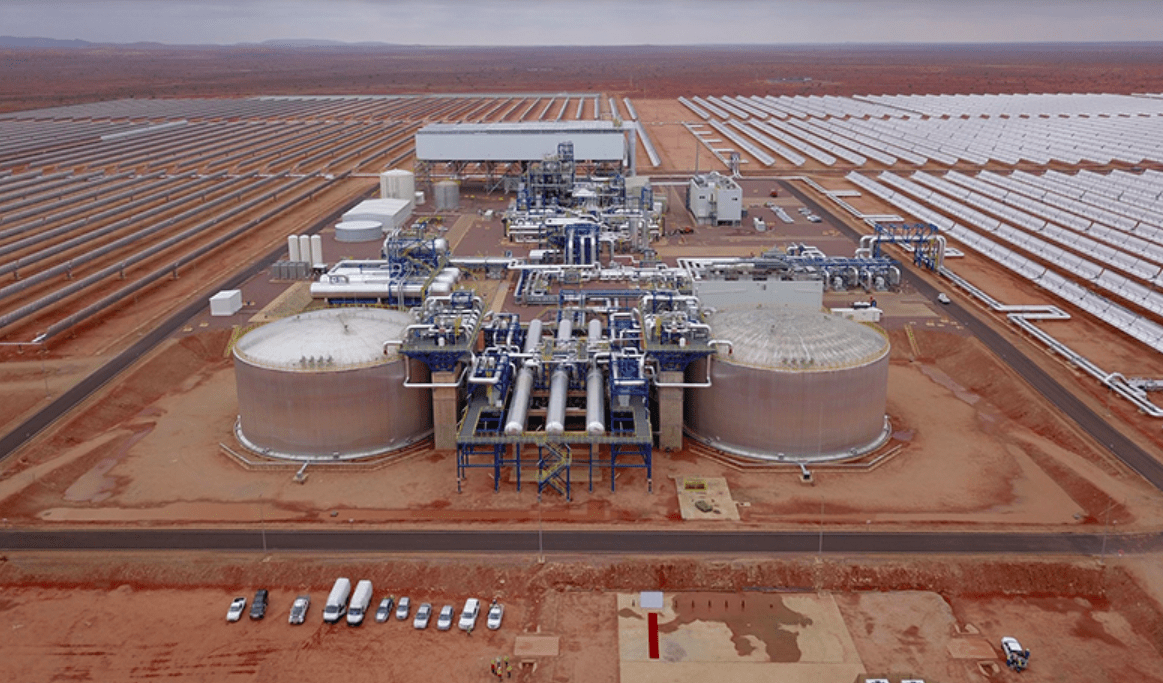
Sener’s 100 MW Ilanga CSP1 in South Africa IMAGE@Sener
Source: South Africa ITWeb
Spanish-based technology and engineering company, Sener, together with its partners, has invested billions of rands in the Ilanga concentrated solar power 1 (CSP1) project,which provides solar-generated thermal electricity to around 100 000 South African households.
Billed SA’s first 100% black-owned solar plant, the Ilanga CSP1 is located in Karoshoek, about 20km east of Upington, and contributes100MW of on-demand sustainable and reliable power supply through the national grid.
The project entered into commercial operation last November as part of government’s Renewable Energy Independent Power Producer Procurement Programme (REIPPPP), creating approximately 1 500 jobs.
As the government prepares to expedite the process of purchasing energy from independent power producers (IPPs), Sener says it is looking to increase its generation capacity in 2020.
Siyabonga Mbanjwa, MD of Sener Southern Africa, told ITWeb that after the country was plunged into unprecedented stage 6 power cuts for the first time, government should act swiftly to resume the renewables IPP procurement programme.
“Through the IPP programme, Sener, together with its engineering, procurement and construction partners, Emvelo and Cobra, has invested billions into Ilanga, and we have negotiated an agreement with Eskom and the Department of Energy to supply energy for the next 20 years.
“While the project currently generates up to 100MW, it has the potential to provide up to 1 400MW to SA. So, what we need now is for the minister’s approval to increase the project’s supply amount, which will be determined by the available budget.
“Secondly, we need the renewable energy IPP procurement programme to resume as soon as possible so that the projects that are ready can be evaluated by government, and the viable projects can be provided with contracts.”
The Ilanga CSP1 plant is equipped with a patented molten salt storage system that allows five hours of energy storage, enabling it to continue producing electricity in the absence of sunlight.It has approximately 870 000 square metres of curved mirrors.
After one year of operation, the combination of technology know-how, construction background and local expertise provided the consortium with the resources to make the project a success story.
Fast tracking IRP
Sener entered the South African market in 2013 as a consortium member, technology provider and engineering sub-contractor for various solar power projects.

Siyabonga Mbanjwa, MD of Sener South Africa IMAGE@ITWeb
According to Mbanjwa, the company, together with its engineering, procurement and construction partners, has created thousands of jobs during construction, commissioning and testing at its power plants since 2013, which include the Kathu Solar Park and the Bokpoort CSP, both based in the Northern Cape.
On Monday, interest groups in the renewable energy sector called for swift and prompt action on renewable energy plans from the government, promising the sector could add up to 2 000MW to the Integrated Resource Plan energy mix within 12 months.
By 2030, government envisages the energy mix will consist of 34 000MW of coal, representing 46% of installed capacity; 11 930MW of gas, or 16% of installed capacity; 11 442MW of wind, or 15% of installed capacity; 7 958MW of photovoltaic (PV or solar); and 4 696MW of hydropower, or 6% of installed capacity.
“A year after inception, the Ilanga project is an example of the success of government’s REIPPPP as the project achieves a noteworthy set of results. Providing energy for around 100 000 homes, while saving 90 000 tonnes of carbon dioxide each year, over 20 years, is a considerable achievement.
“It is hence undoubtable that solar energy has a huge role to play in SA, particularly when our climate realities are taken into account and when selecting energy sources for the country and continent,” concludes Mbanjwa.














































